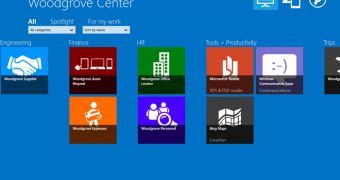One of the challenges that IT pros face today is the increasing number of personal devices that employees are bringing to the enterprise environment.
Ranging from smartphones to tablets and other portable PC form factors, these devices are being used more and more at the workplace, and require access to sensitive corporate data.
Thus, managers need to find solutions that would offer them the possibility to efficiently overview the extent to which they can control these devices.
This is one of the main focuses in the development of Windows 8 and, specifically, the designing of Windows on ARM, Jeffrey Sutherland, a program manager lead in our Management Systems group, explains in a recent blog post.
“Our focus has been on how we can continue to deliver PCs and software that users need, like applications and data-access on any device, with enough IT control to assert that the device is trustworthy, while avoiding any compromise of the user’s privacy on their personal device,” he notes.
The next flavor of Windows will come with support for business-tailored applications and will enable enterprises to deploy their own apps for the devices their employees use.
They will be able to deploy these on devices without having to publish them in the Windows Store, through software such as System Center Configuration Manager and Windows Intune, though only on x86/64 devices.
For Windows on ARM – or Windows RT, as it will be ultimately called –, Microsoft came up with a new management client meant to enable the delivery of LOB apps to users.
“There are actually two parts to the WOA management client: the built-in system component, which we’ll call the agent; and a Metro-style app, which we’ll call the self-service portal, or SSP, that the consumer uses to browse for and install LOB apps made available to them,” Sutherland explains.
“Both parts of the WOA management client are well behaved Windows 8 apps in terms of user experience, power management/battery life, network awareness (for metered networks), and overall functionality.”
In this post on the Building Windows 8 blog, Jeffrey Sutherland provides some additional info on how Microsoft reshaped the way in which systems management is done to meet the growing trend towards “consumerization” of IT with the introduction of Windows RT.

 14 DAY TRIAL //
14 DAY TRIAL //